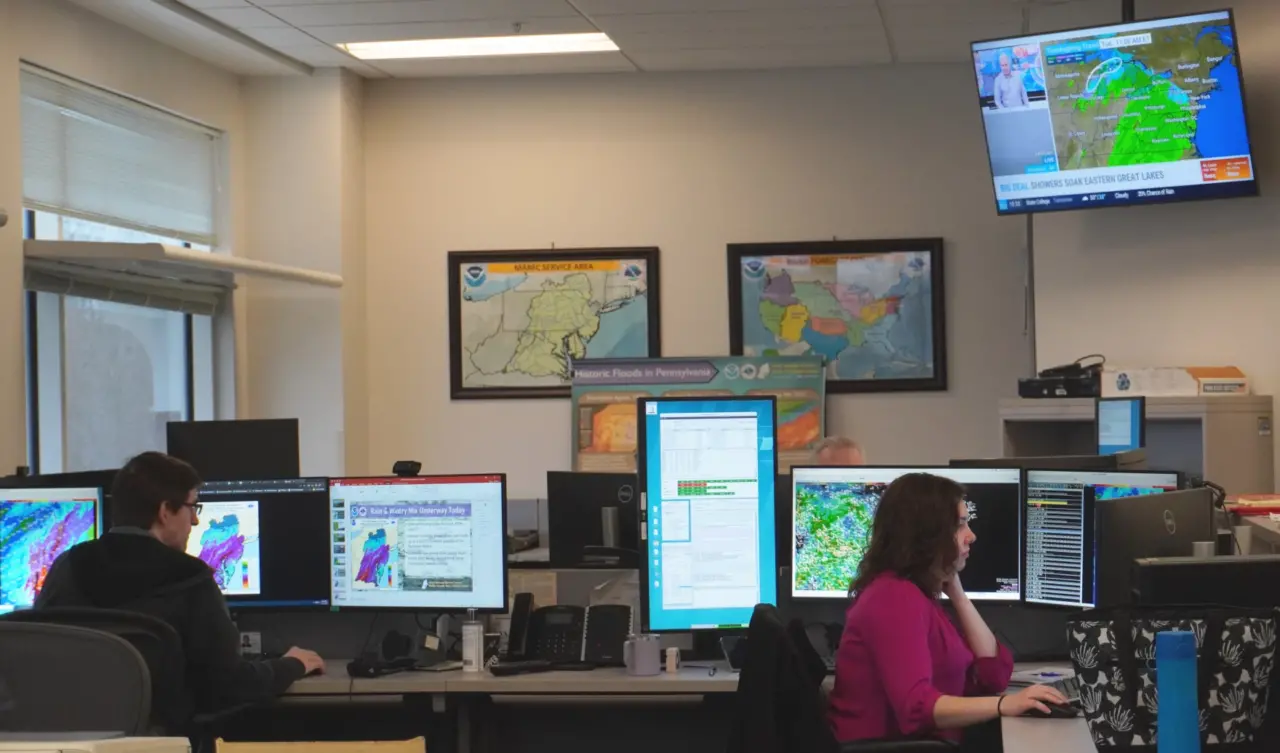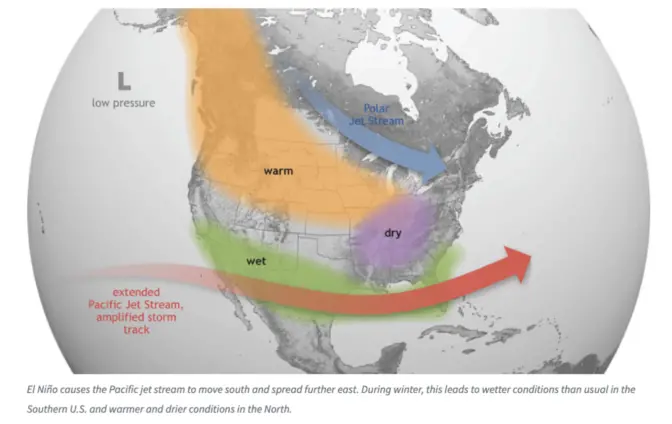
Workers in the National Weather Service's State College office. (Sydney Roach/WPSU)

Workers in the National Weather Service's State College office. (Sydney Roach/WPSU)

Workers in the National Weather Service's State College office. (Sydney Roach/WPSU)
This winter will be warmer than usual, following a trend over the past few years. That’s according to Jonathan Guseman, a Warning Coordination Meteorologist with the National Weather Service in State College.
”By and large since in the late 1970s, 1980s, we’ve seen an upward trend essentially in overall temperatures,” Guseman said.
Guseman said even if temperatures are warmer than normal, there will still be snowstorms and ice throughout the winter, according to National Weather Service outlooks.
“So [it’s] still best to prep everything now, especially with the holidays getting here and looming and make sure that you’ve got safety kits, things in your car [to] keep you warm, non-perishable food, flashlights, all that so that if you are caught, if we do get a significant outbreak or winter storm, you’re prepared early,” Guseman said.
Guseman says the past three winters were in a La Niña pattern, which leads to more rain and less snow throughout the winter in Pennsylvania. This year is an “El Niño” winter, which means the water in the Pacific Ocean is warmer than normal. This affects how much rain and snow Pennsylvania gets.
“When we’re going into an El Niño winter like we are this winter, we tend to see above normal precipitation more toward the southeastern portions of the state. And then below normal as we work further Northwest, and the Alleghenies and up into Warren County,” Guseman said.
The National Weather Service is also asking people to be on the lookout for snow squalls this winter. It has new guidelines for when it sends out warnings about snow squalls, which its State College office helped to pilot last year.

Graphic showing the effects of El Niño patterns in North America. (National Oceanic And Atmospheric Administration)

A collection of interviews, photos, and music videos, featuring local musicians who have stopped by the WITF performance studio to share a little discussion and sound. Produced by WITF’s Joe Ulrich.
The days of journalism’s one-way street of simply producing stories for the public have long been over. Now, it’s time to find better ways to interact with you and ensure we meet your high standards of what a credible media organization should be.